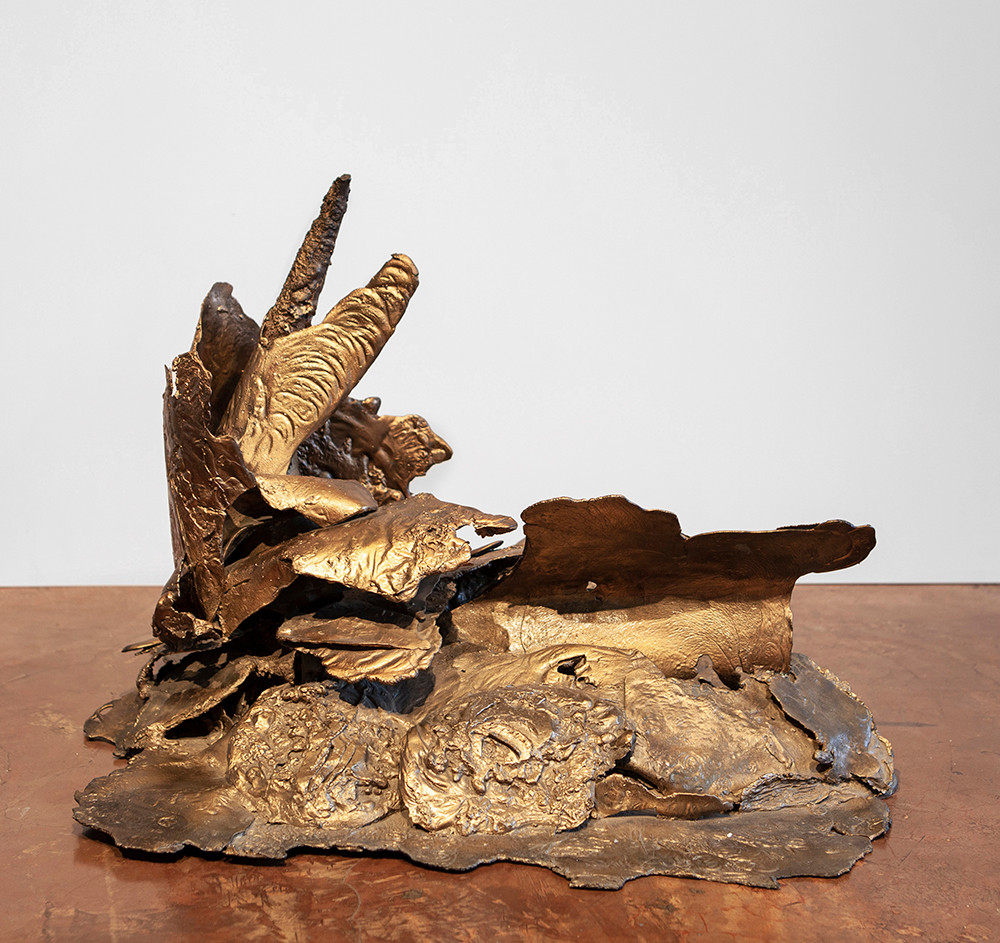[ad_1]
Born in Mumbai in 1949, two years after Indian Independence, Mrinalini Mukherjee, who died in 2015, belonged to a generation of artists emerging in the 1960s who attempted to decolonize the young nation’s visual arts. Primarily a fiber-based sculptor, she used materials indigenous to South Asia, like hemp, jute, cotton, wool, and sisal, updating Indian craft techniques to develop a unique hybrid language that combined the traditional and the modern. She frequently modeled her sculptures on flora but—as Nilima Sheikh recalls in the catalogue for the artist’s 2015 retrospective at the National Gallery of Modern Art in New Delhi—had no interest in “pretty English landscapes.” Instead, her inspirations tended to be wild and tropical: spiky date palms and lush mango groves, bougainvillea and plantain trees.
Mukherjee also created works on paper throughout her career, often experimenting with printmaking in periods between working on her labor-intensive sculptures, which could take months to construct. Jhaveri Contemporary’s exhibition, which was titled “Bagh” (Hindi for “garden”), juxtaposed nineteen etchings of landscapes from the 1970s and ’80s with eight sculptures in bronze, a material Mukherjee began working with in the early 2000s. Mukherjee’s etchings have a runny, slippery quality that recalls watercolor painting. Her fine yet erratic lines vividly animate the natural world she depicts, giving the prints a sense of momentum. In River (1983), trees move at impossible angles along a river’s banks as the water rushes beneath their swooning canopy. In Storm (1984), a countryside scene is electrified by a burst of dark rain, which explodes over the landscape.
Some etchings are made buoyant by the presence of animals or birds. Afternoon (1979) depicts a plump squirrel with an ample, fluffy tail curiously raising its nose in the air, while in Crow (1979), a single bird cuts across a tableau brimming with plants, trees, and flowers. Each bit of flora is individually detailed, with different types of incisions on the plate used to render the distinct textures of fronds, bark, and stems. In the etchings, we notice Mukherjee’s eye for subtlety: for instance, the way a certain leaf shifts in the wind, or how water curves against a riverbank.
The etchings set the stage for the show’s sculptures. While the prints offer insight into her painstaking attention to nature’s details, the bronzes, from the end of her career, show how she transformed and reimagined her observations of the living world. To create them, Mukherjee used an improvised version of the lost-wax technique, sculpting wax models by hand before casting them in bronze and carving abstract figures onto the surfaces of the finished sculptures using tools borrowed from a local orthodontist.
Despite Mukherjee’s use of bronze, a medium associated with permanence, the sculptures maintain a sense of pliability, as if they might change shape in an instant. Cluster (2008) is an upright figure composed of many sheets of metal, with a twisted neck and scooped mouth from which a pearl-like sprout emerges: a sweet offering. Outcrop VI (2007–08) lies flat on the floor, rather like a crushed orchid with its petals in disarray. The sculptures are erotic and corporeal, as though resulting from feeling and touch, not sight. Glinting in the light, they look supernatural, even alien, as though coming into being and dissipating at the very same time. You can almost hear them ooze and leak, gurgle and fizz.
[ad_2]
Source link


